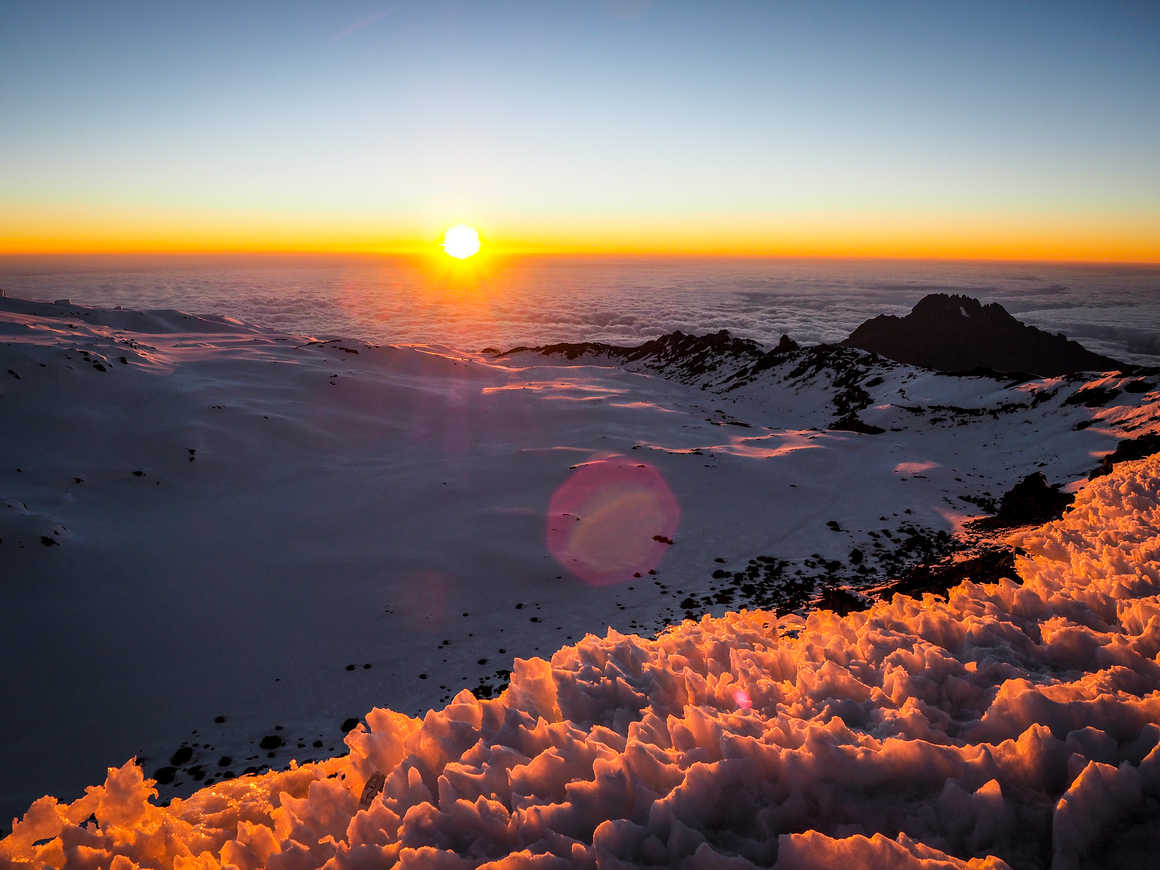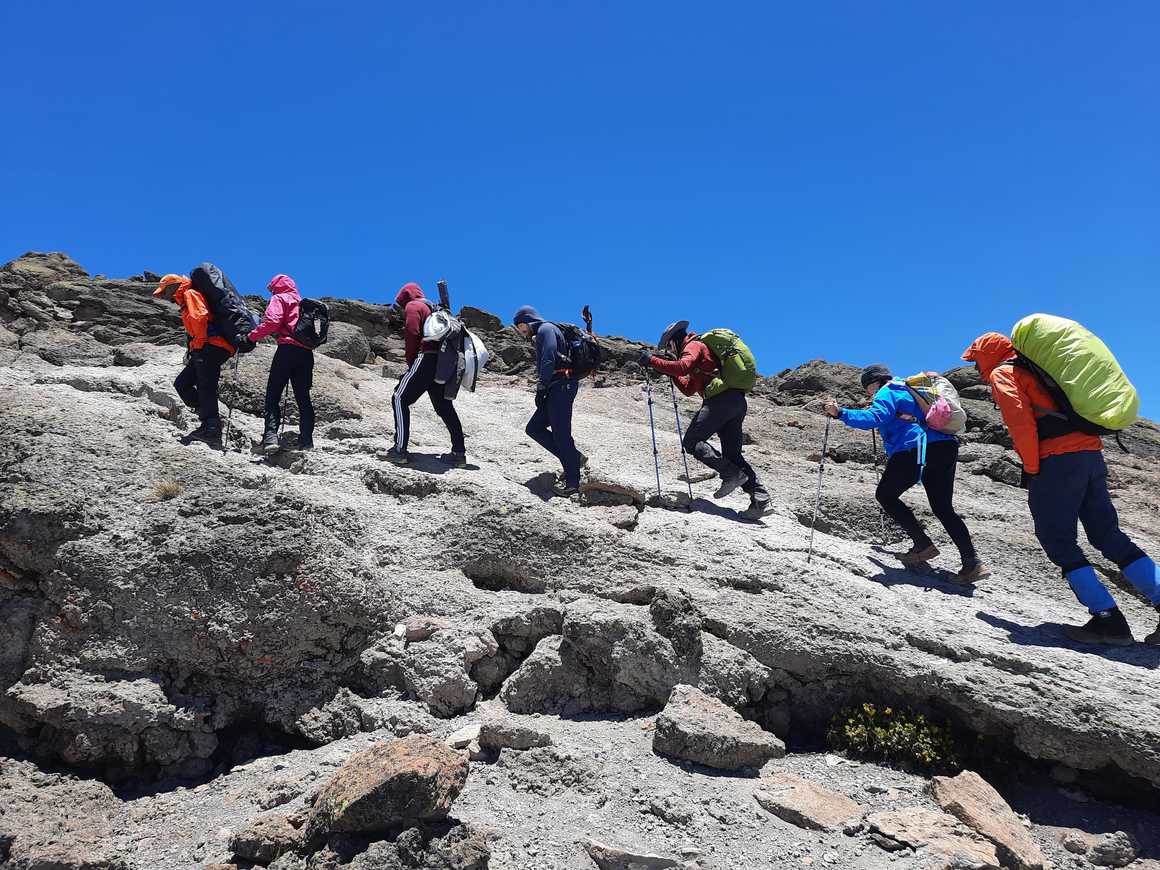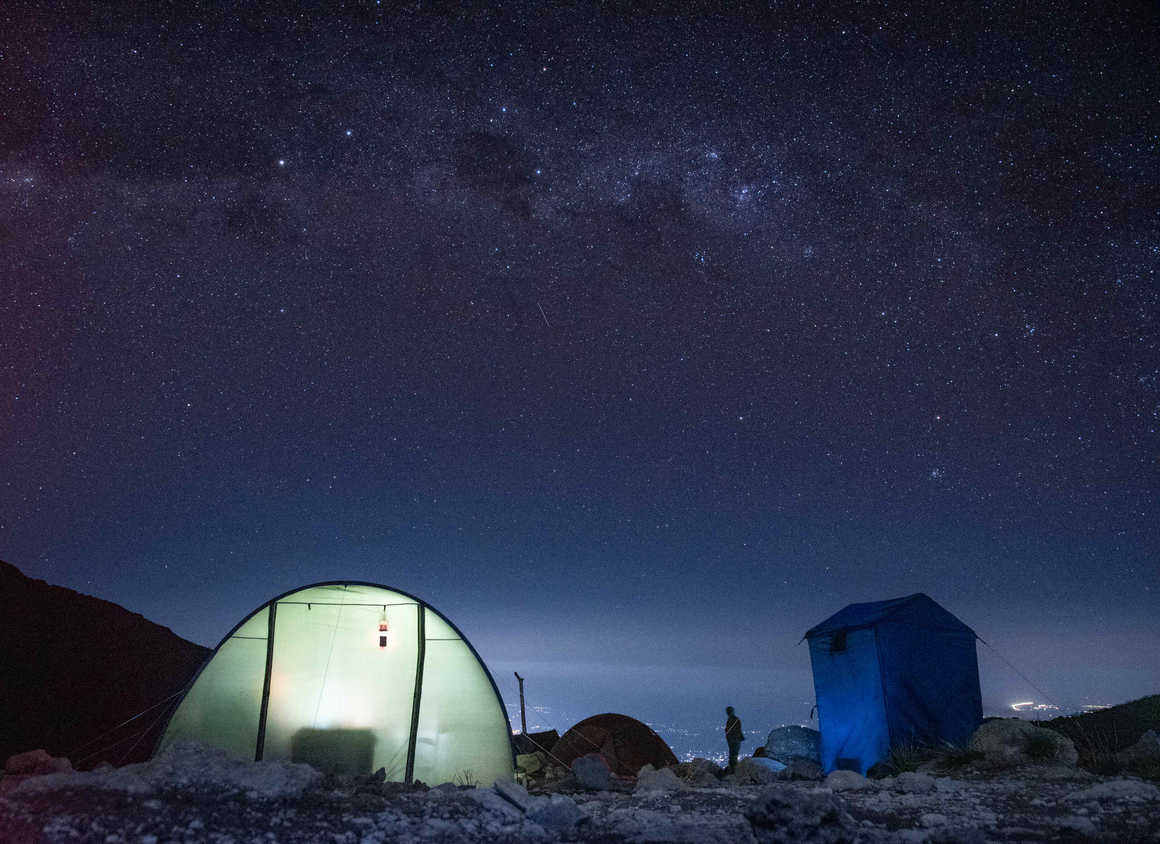What I Wish I Knew Before Climbing Kilimanjaro
Climbing Kilimanjaro is a challenging experience for anyone
who sets out to reach its impressive 5,895m summit and you will undoubtedly
learn a lot of important lessons along the way. As one of the world’s seven
summits it’s no wonder that reaching Kilimanjaro summit is on the bucket list
of countless hikers from around the world, attracting many first-time altitude trekkers
to its’ slopes.
But how are you to know what to expect without climbing
Kilimanjaro yourself? This guide will cover some of the most important things
our experienced team and guides have said they wish they knew before climbing
Kilimanjaro to make the journey to the summit as smooth and enjoyable as
possible.
From the importance of physical preparation to our equipment
recommendations for climbing Kilimanjaro, we’ll be sharing invaluable
advice from the team at Kandoo Adventures on what to expect from your
Kilimanjaro trek. So, read on for some insightful tips and guidance about
climbing Kilimanjaro before you embark on this once-in-a-lifetime adventure.

1. Pick your Kilimanjaro route carefully
There are 7 different Kilimanjaro routes, and some are more
difficult than others. There are also several factors to consider when choosing
which route you will take to climb Kilimanjaro, including how long you want to
spend on the mountain, your experience level and the success rate of each
route.
Depending on which Kilimanjaro route you choose, it takes
between 6-9 days to reach the summit and descend to the finishing point. By
choosing a longer route, you have more time to adjust to the altitude, a
decreased chance of suffering from altitude sickness and ultimately the best
chance of success on your Kilimanjaro trek.
Kandoo Adventures have an impressive average summit success
rate of 98% across all our Kilimanjaro routes which is due to the time
dedicated to acclimatisation
to high altitude. For more information, check out our blog on the best route to climb Kilimanjaro.
2. Training is vital
At Kandoo Adventures, we believe that anyone with a good
level of fitness and enough determination can trek to the summit of
Kilimanjaro, Uhuru Peak. You certainly don’t need to be a fitness fanatic or a young
individual to climb the Kilimanjaro although having a high level of fitness
certainly is a bonus and will make the time you spend on the mountain, trekking
up to 7 hours per day, more enjoyable.
We recommend building a training plan 6 to 12 months prior
to your Kilimanjaro trek to build your endurance. The training plan should
include strength training, aerobic exercise and most importantly, regular hikes
around the countryside with a heavy bag. For more detailed information, check
out our Kilimanjaro training plan.
3. Pack everything
If you’re a regular adventurer, you may feel well equipped
when packing for your Kilimanjaro trekking trip however for some, this might be
your very first big adventure trip. The best way to ensure that you have
everything you need for conquering this mighty mountain is by closely following
our
Kilimanjaro gear list.
Here you will find all the essential kit you will need to
climb Kilimanjaro and where possible we have included links to gear that we
personally use and recommend. You will need EVERYTHING on this list so be sure
to follow it exactly and make sure you are prepared.
Forgetting even a small essential item, such as lip balm,
could very well be the difference between enjoying your journey or not!
4. Kilimanjaro is cold
Most people underestimate how cold it is on Kilimanjaro due
to its proximity to the equator. Whilst the base of Kilimanjaro has a warm
tropical climate that is consistent all year round, the summit is often
freezing and can range between -7 and -29 degrees Celsius (20 and -20 degrees
Fahrenheit) depending on the wind chill factor. For this reason, when we say
pack everything, we mean that layers are absolutely essential. You’ll find
yourself setting off fully wrapped on a cloudy day, working up a sweat as you
climb the sun comes out so you shed some layers, but then you stop to rest and
the clouds come back and the temperature plummets. This is something every
Kilimanjaro trip goes through, no matter when you climb. The variation in
temperature, both based on the weather and your work rate, means you’re
constantly adjusting your layering level so bringing lots of insulative,
moisture wicking layers will keep you comfortable for the whole duration of
your Kilimanjaro hike.
Kilimanjaro has 5 different climate zones which can be split
into distinct areas and the weather changes drastically as you ascend the
mountain. The highest area, known as the glacial or arctic zone, is often covered in snow
and the high winds at this altitude make the temperature feel far lower than it
is. The higher you travel, the colder it’ll be.
The best thing you can do is bring lots of layers as you can
add or remove pieces of clothing to adapt to changing weather, activity level
and body temperature. Check out our blog on Kilimanjaro
weather for more detailed information on what to expect.

5. The climb is not as technical as you think
While climbing Kilimanjaro is both physically and mentally
demanding, it is not a technical climb like
the other peaks that make up the world’s seven summits.
This has made Kilimanjaro one of the most popular trekking peaks of all time,
attracting thousands of hikers of all different abilities to its slopes every
year.
Before attempting to climb Kilimanjaro, you will need to
train your body to cope with long periods of physical exertion. Not only this,
but you need to be extremely mentally resilient for the best chance of success.
Although each of the seven routes requires up to 8 hours of walking with up to
1,500m of ascent each day, the Kilimanjaro trek requires no real mountaineering
skills. The Great Barranco Wall is one of the most challenging parts of your
journey and involves a bit of a scramble. This is usually something our guests
find particularly enjoyable and is nothing to be worried about. You’ll hit the Barranco
Wall at around day 4 of your Kilimanjaro hiking trip, depending on which route
you’re on.
6. Go slow
Even if you feel apprehensive before the climb, once you
start, you will realise the slow and steady pace the guides set is completely
manageable and should not be scoffed at. There is no need to go fast when
climbing Kilimanjaro as all Kandoo itineraries have been carefully planned to
allow plenty of time to cover the required distance each day. Not only this but
taking the trek steady and allowing for regular breaks will help you
acclimatise better and improve your overall chances of summit success.
‘Pole, pole’, the guides will tell you. Slowly, slowly. We
all know the tortoise and the hare tale!
7. Beware of altitude sickness
Altitude sickness occurs when your body doesn’t have time to
adjust to reduced oxygen availability when you’re at a high altitude. Your age,
gender and level of fitness have no bearing on whether you will suffer from
altitude sickness so you should make sure to plan for the possibility of
altitude sickness by taking medication that will alleviate symptoms or spending
time at high altitudes before your trip.
Minor symptoms of altitude sickness such as headaches can be
treated with painkillers and by maintaining your water intake. The drug
Acetazolamide (Diamox) is also widely considered to be effective in managing
altitude sickness and can be bought before your departure to Kilimanjaro.
Most people will experience some symptoms of altitude
sickness, which can range from sleeplessness to lethargy, to nausea and
headaches. So long as you stay hydrated, listen to your body and trust your
guides, you should be able to successfully summit Kilimanjaro. Our team carry
out daily health checks and will monitor you the entire time you’re on the
mountain so don’t let the risk of altitude sickness put you off.
8. Hydration is essential
It is important to drink plenty of water when climbing
Kilimanjaro because your body loses more water than usual from exposure to the
sun, from sweating due to exercise and also from breathing cold, dry air.
Staying hydrated makes climbing easier and it can also help to prevent
altitude sickness.
Drinking plenty of water is even more important than eating
when climbing Kilimanjaro. Your guides will encourage you to drink water all
day long even if you don’t feel thirsty and the general rule of thumb is that
you need to drink at least 3 litres of water per day on this high-altitude
expedition. Yes, you might need to pee way more often than usual but taking a
pee bottle will make this super easy!
9. Snack, snack, snack
If there is one thing we recommend you bring that isn’t on
the gear list, it’s snacks (and plenty of them). You will be burning up to 2,000
calories per day on the mountain and even with 3 huge meals provided by your
mountain guides, it is a good idea to come prepared with snacks, snack bars and
sweets to consume during the day to keep yourself moving. You might find your appetite
reduced whilst hiking Mt Kilimanjaro so having something to keep your calorie
intake up in your daypack will ensure you have enough energy to keep putting
one foot in front of the other. Nut bars, trail mix, protein bars and chocolate
bars are all good options but so long as you pack something tasty and not too
heavy, bring along snacks that tempt you to eat.
10. You summit Kilimanjaro at night
Many people don’t realise that you actually begin the trek
to Kilimanjaro summit (or Uhuru Peak) during the middle of the night. After
arriving at Barafu (or Kosovo) camp the day before, you will wake up and have
breakfast before starting the push to the summit at around 11:30pm.
With the light of your head torch to guide your
feet, you will be climbing a steep path for between 6 and 8 hours to reach
Stella Point on the crater rim if you are taking the Machame or Lemosho routes
or Gillman’s point on the Marangu, Rongai or Northern Circuit routes. You
should hopefully reach this point in time to witness the sunrise. From there
the track is less steep but it is another 45 to 60 minutes to the summit. For more detailed information about
what to expect on your Kilimanjaro summit night, check out our blog.
For an extra amazing Kilimanjaro trip, ask the team about Kilimanjaro full moon dates. You won't need your headtorch at all, so long as the weather is clear, and your ascent will be illuminated under the light of a full African moon.
11. Summit day is insane
Summit day is insane. Insanely tough. Insanely awesome. Insanely long.
Summit day is by far the hardest day of the Kilimanjaro
trek. The push to the summit requires a huge amount of effort but you will be
rewarded with an immense feeling of achievement once you reach the top. You
will be exhausted, and you should also wrap up in as many layers as possible
because it is extremely cold up there.
And it’s not over just yet! After you’ve taken photos at the
top of Kilimanjaro and had a moment to take in your great achievement, the exquisite
views and congratulate your fellow trekkers, you will head back down to Mweka
campsite via Barafu Camp for lunch, dinner and a well-earned sleep. On the
final day of your trek, you will descend a further 1,300m to Mweka Park Gate
from where you can transfer to your hotel.
12. Tipping is expected
Your Kilimanjaro climb would not be possible without the
tireless support of your guides, porters and support staff. Your expedition
will include a toilet porter, cooks, cleaners, water porters and several
guides. Their unwavering optimism, endless energy and hearty meals are largely what
gets many of you to the summit of Kilimanjaro. In order to thank them accordingly,
and as local custom dictates, tipping is required if you have had a good trip. Our
team have been known to sing all day long to keep you distracted, tell jokes
and teach Swahili, as well as making you cakes at 3,000m. They are worth their
weight in gold.
We work closely with the Kilimanjaro Porters Assistance
Project (KPAP), who look after the welfare of porters on Kilimanjaro, and they have recommended the following tipping guidelines.
KPAP recommend tips for porters are in the range of $6-$10/day per porter. For
other roles we recommend $20/day for guides, $12-$15/day for assistant guides
and $12-$15/day for cooks. These figures are per group, not per climber and you
will be sent a copy of the tip recommendations and estimated numbers for your
group. The size of your group, however, can only be confirmed on the first day
of your climb.
Tipping will take place on your last night on the mountain
where the team will gather to celebrate with you. Representatives will come to
your hotel once you reach the bottom of the mountain to accept the tip on
behalf of all the porters and they will distribute the money themselves. You
can either take cash with you and keep it on your person in a money belt or
withdraw cash in Kathmandu. Other than tips, it is unlikely you will need any
other cash whilst trekking.

ALWAYS STAY POSITIVE
Lastly, but by no means least, stay positive.
No matter how
tired your legs are, how cold/hot you get or whatever the weather is doing, remember
to enjoy every moment. Don’t forget to look up and take in your surroundings.
And always, stay positive! This is what will get you up Kilimanjaro mountain.
Climbing Kilimanjaro is a challenging yet rewarding
experience that you will truly never forget. To try and make sure that your
expectations of your trek are properly managed, this article on what to expect
from your trip should help some way towards your preparations. The team all put
their thinking heads on, when asked about ‘what I wish I knew before climbing
Kilimanjaro’, and the list above was the result. Hopefully you’re now exciting
to start planning your Kilimanjaro climb but if you have any questions, don’t
hesitate to get in touch with the friendly team here at Kandoo Adventures.














